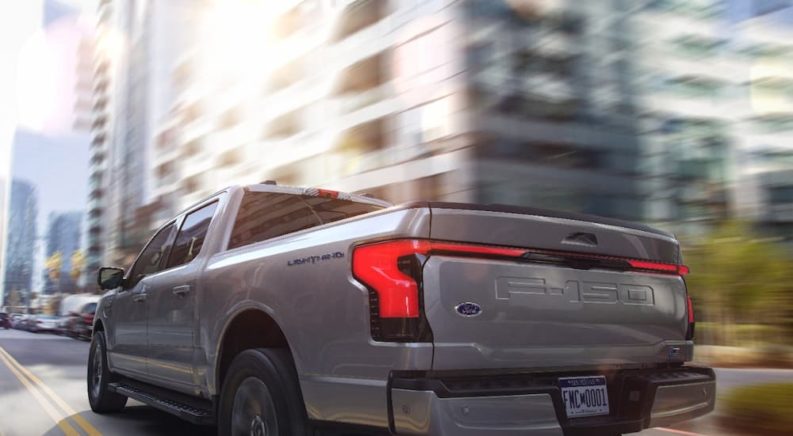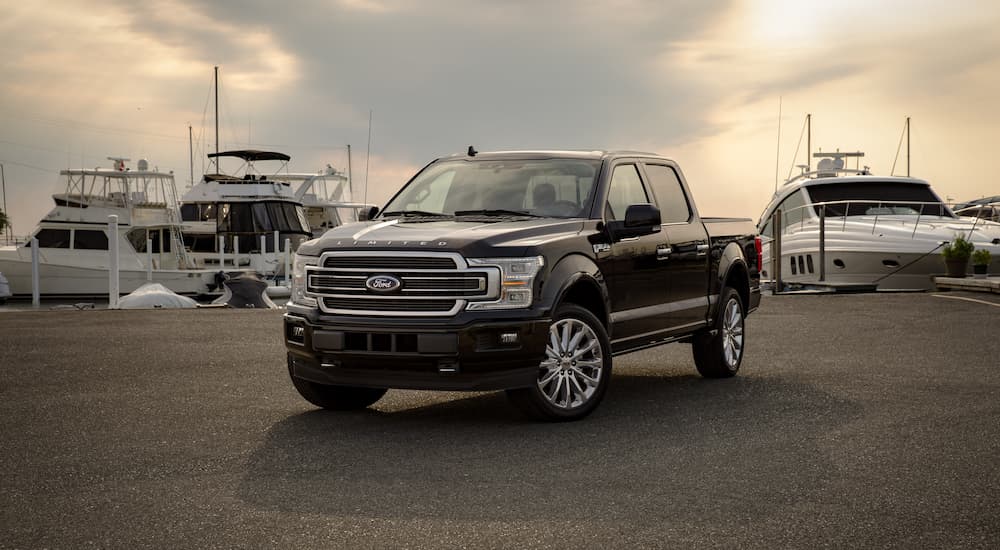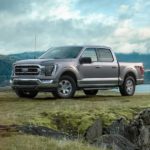The full-size pickup market is one of the most competitive categories in the automotive world, and growing all the time. By some estimates, the global pickup truck market is expected to balloon from $186.6 billion in 2021 to $256.5 billion in 2028, representing one of the largest expansions in the industry as a whole. American drivers, in particular, remain the most infatuated with these reliable, practical pickups, with three brands dominating the full-size truck market: Ford, Chevrolet, and Ram. These three automakers account for 83 percent of light-duty pickup sales in the country, with the Ford F-150, Chevy Silverado 1500, and Ram 1500 occupying the top of the heap.
Among these three, the F-150 is the undisputed leader, regularly outselling Chevy and Ram’s entries by more than 200,000 units per year. In fact, the F-150 isn’t only the best-selling full-size truck in the U.S., it’s the best-selling vehicle of any kind, with 726,004 models sold in 2021 alone. So why do you want to look for a Ford F-150 dealer? Every driver might give you a different answer, but really, it comes down to the pickups’ unique all-aluminum construction. Offering significant advantages in everything from fuel economy and power to towing capacity and insurance rates, this novel construction method gives Ford’s pickup a significant advantage in the competitive segment. Let’s take a closer look at some of the advantages of all-aluminum construction and see how a commitment to innovation has allowed the F-150 to retain its title as king of the road.
Innovation Drives Success
While steel has long been the go-to option in the world of full-size trucks, Ford took an innovative gamble when it decided to switch to an all-aluminum body for its marquee pickup starting in 2015. This was a pretty bold move given the fact that no other pickup had ever utilized an all-aluminum body, and while the decision was initially met with some skepticism from some drivers and competitors, it turns out Ford was something of a trendsetter. While brands like Chevy and Ram had been publicly skeptical of the new approach, with one going as far as launching an ad campaign specifically focused on attacking the F-150’s perceived lack of durability, they soon changed their tune and followed suit soon after. Ford’s F-Series Super-Duty trucks also got in on the action in 2017, though the F-Series’ frame is still constructed from high-strength steel given the model’s heavy-duty usage.
While there might have been some skepticism surrounding the new aluminum construction method, those concerns seem to have quickly faded from memory. Ford did see a dip in sales in 2015 due at least in part to the trailblazing approach, but as drivers actually got behind the wheel and discovered the advantages offered by the new aluminum construction, the figures quickly rebounded. F-150 sales represented 42 percent of transactions amongst the big three truck brands in 2015, rising to 43 percent in 2016 and 45 percent in 2017. Those figures have remained strong in the years since, with the F-150 remaining the undisputed king of the full-size pickup jungle.
So what are the advantages of using aluminum over steel? Turns out there are quite a few, so let’s dive in. First and most obviously, aluminum is much lighter than steel. The 2015 F-150 was some 700 pounds lighter than the previous year’s model, significantly improving the truck’s towing and hauling capacity. The 2015 model gained an extra 1,000 pounds in towing capacity over the heavier 2014 model, maxing out at 9,100 pounds to the 2014 model’s 8,100. This is an especially big deal in the full-size truck market, where, more often than not, drivers place an increased emphasis on a truck’s workhorse-like qualities.
The difference is even more pronounced in the payload department, with the newer, all-aluminum F-150 boasting a payload capacity of between 1,654 and 2,286 pounds, depending on the model, engine, and other factors. That’s a marked improvement over the 1,046 to 1,988-pound payload capacity of the 2014 version, which, while still powerful, has more of its own weight to haul around than the 2015.
Fewer Pounds = More MPG
Of course, a lighter pickup doesn’t just mean improved towing and payload capacity but improved fuel economy as well. Shedding 700 pounds allowed the F-150 to up its MPG across the board, which has become an increasingly important consideration in a time of ever-rising fuel prices. While the 2014 F-150 posted a respectable 17 MPG in the city and 23 MPG on the highway, the new lightweight frame allowed Ford to step it up another level with a fuel economy rating of 19 MPG in the city and 26 MPG on the highway for the 2015 version. This gave the F-150 a significant edge over some of its less fuel-conscious competitors like the Silverado 1500, which has lagged behind Ford’s pickup ever since.
The switch to all-aluminum construction was a pretty easy way to boost the truck’s MPG rating, but Ford has continued to innovate when it comes to fuel efficiency, with the stats climbing every year from 2014 to 2019. This is due in part to the introduction of an all-new 3.5-liter EcoBoost engine paired with an industry-first ten-speed automatic transmission in 2017. The novel ten-speed transmission doesn’t just improve the pickup’s fuel economy but also gives drivers increased control when it comes to the inevitable towing and hauling duties. More recently, new technology has allowed the automaker to significantly improve the F-150 fuel economy, especially when it comes to the full hybrid 3.5-liter PowerBoost V6, which offers a suspiciously un-truck-like 25 MPG in the city and on the highway with the 2022 model.
More Towing, Lower Premiums
Despite the fuel economy, towing, and payload benefits, some drivers might still be unsure about the F-150’s all-aluminum approach. After all, when it comes to a workhorse pickup like the F-150, you want it to be made of the strongest material possible, right? Not exactly. The weight savings enabled by the new aluminum body allowed Ford to beef up the truck with stronger components in other areas, resulting in a pickup that’s nearly indistinguishable from its predecessor when it comes to safety and performance. In many ways, the aluminum approach is even better than the old steel formula. For example, thanks to the aluminum body’s modular structure, repairs are often cheaper than they might have been in the past.
Aluminum can also be recycled more easily than steel, allowing Ford to melt down cast-off and leftover metal to produce new parts. Take the case of one hail-damaged aluminum F-150 that rolled into a Texas Ford dealership in 2017. The dented truck required fewer hours of labor to repair than the previous steel models, and with aluminum parts often costing less than their steel counterparts, the whole job cost $2,000 less than it would have for a comparable 2014 model. Lower repair costs also mean lower insurance costs, with the all-aluminum F-150 having a seven percent lower collision claim severity than previous models, according to a report from the Highway Loss Data Institute.
Just One Big Reason to Love the Ford F-150
As you can see, there are plenty of advantages when it comes to the Ford F-150’s all-aluminum construction. Drivers get the same power and performance they’ve come to expect from America’s best-selling pickup and will enjoy improved towing capacity. Even better, this construction method drives down the truck’s overall cost of ownership thanks to improved fuel economy and reduced insurance rates when compared to pre-2015 models. Add these perks to the F-150 wide range of brawny engines, trims, and equipment packages, and you have a well-rounded offering that’s proven unsurprisingly hard to dethrone.
It fits in with a larger commitment to innovation on the part of Ford, which has managed to keep up with the times and even set new trends by never being satisfied with the status quo. The all-electric F-150 Lightning is just the latest example of this forward-thinking approach, offering drivers a powerful and efficient alternative to the fuel-burning pickups of the past. With such a strong track record and undeniable market dominance, we’re always excited to see what Ford will get up to next.






